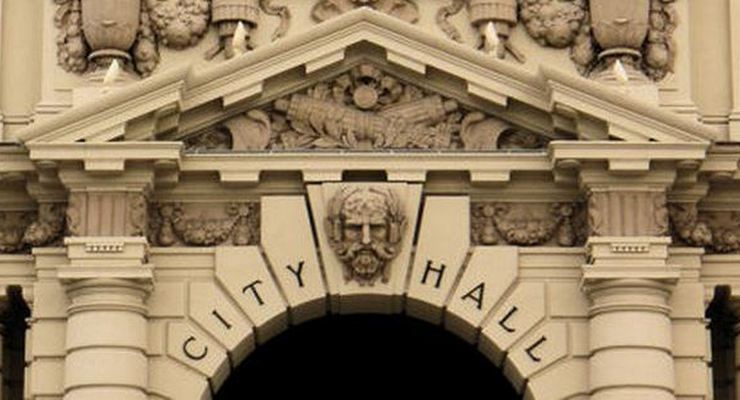
At left, the blessing of the Kachkar. At right, Kevork Keushkerian, former member of the Central Board of the Tekeyan Cultural Association of the United States; Alique Bardakian; Carl Bardakian, chairman of the Tekeyan Cultural Association Metro Los Angeles chapter; Arev Bardakian. [Courtesy photos]
The Tekeyan Cultural Association Beshgeturian Center in Altadena is now the recipient of a new Khachkar (cross-stone) from Armenia.
The cross-stone, sculpted in Armenia and shipped to the U.S. in June, was donated by Dean Shahinian, of Washington, DC.
The cross-stone was recently formally dedicated and blessed by Archbishop Hovnan Derderian, the primate of the Western Diocese of the Armenian Church. The Holy Muron (“chrism”) used to bless the khachkar came from the Mother See of Holy Etchmiadzin in Armenia, where the head of the Armenian Church presides.
The Holy Muron is prepared by the head of the Armenian Church in a special service every seven years and distributed to Armenian churches worldwide. The chief ingredient of Holy Muron is olive oil with a precise proportion of balsam, to which are added ingredients taken from forty kinds of sweet smelling incense, flowers and trees in Armenia.
It is then placed on the main altar of Etchmiadzin Cathedral in Armenia, and then formally used to anoint ordained clergy, the newly baptized, churches, and khachkars.
“The khachkar is a distinct symbol of both the religious and cultural identity of the Armenian people,” said Kevork Keushkerian, a former member of the Central Board of the Tekeyan Cultural Association of the United States and Canada.
The large cross at the center of the khachkar is a traditional Armenian cross design, he added.
Armenia was the first nation to accept Christianity as an official state religion in 301 A.D., 13 years prior to the Roman Empire, he explained. It later became associated with the Armenian nation, with the first cross- stone being built in 879 A.D., but in a very informal form until the 11th century.
“We are grateful to the donor of the khachkar. The khachkar has now become a landmark on the Altadena and Pasadena border,” added Keushkerian.
Keushkerian added that “the church and the cultural centers are closely related and closely associated with each other, because in the absence of the Armenian independent government, it was the church who took over the job of creating schools and instilling in the children the cultural awareness.”
The blessing of the khachkar has also received global coverage in the Armenian press, from the United States to Canada to Argentina and to Lebanon, Egypt, Turkey and Armenia.














 7 comments
7 comments



